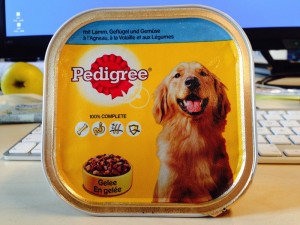
Customer Success teams cannot succeed if they are operating in a vacuum. I will repeat this statement: Customer Success teams cannot succeed if they are operating in a vacuum.
What does that mean and how do you make sure that your Customer Success team never enters into that “vacuum”?
Customer Success as a department has not been around for many years and is a new concept to many. As a matter of fact, I am sure most Customer Success Managers and Leaders have grown tired of explaining what Customer Success is and how it is a very different entity from Support.
For those that have never worked with a Success Team, they immediately question:
- How is Customer Success different than Support?
- Why do we need a “Success” team?
- What does a Customer Success Manager (CSM) do?
- What value will a CSM bring?
I am not going to answer all of these questions directly in this article, but I am going to give you a short recipe to follow that will help set up any Customer Success Manager for success in your organization. Once you’ve set them up for success, these questions will answer themselves.
Follow this simple recipe for success:
- Add strong relationships with key stakeholders
- To one part strong alignment
- And a dash of immediate wins
Season to taste.
Ingredient 1: Strong relationships with key stakeholders
Identify who the key stakeholders your CSM will work with are and get them talking ASAP. Don’t wait! Immediately start demonstrating to these stakeholders the value your CSM will bring to them. When value is demonstrated, the purpose of a CSM will be immediately understood.
So who exactly are the key stakeholders? And what is the value that a CSM can bring? Great questions! Here are a few common examples:
- Sales Team – Customer Success will partner heavily with Sales. Customer Success can add value by providing information on what our successful customers are doing, what features they are using the most, what works well, and also what customer group tends to not be successful in your product. This information helps the Sales Team sell it right the first time therefore reducing churn risks down the road (and those not so fun breakup conversations). Let’s not forget the upsell and cross-sell opportunities. When Customer Success is building strong relationships with the customers, they are creating an avenue for easier upsell, cross-sell, and renewal conversations.
- Product Team – Customer Success often have daily interactions with your highest value customers. Providing feedback directly from these high-value customers can guide the Product team and inform their decisions, thus creating products that customers want. This effective feedback loop will provide customers with a quick return on their investment (along with an ever growing stickiness as they further integrate into the product).
- Marketing Team – The healthiest, stickiest, promoters (high NPS, high CSAT, heavy adopters), may have great stories to share about how they use your product or how your product has helped improve their business workflow. It is a huge win for any Marketing Team when Customer Success hand delivers these customers to them.
Ingredient 2: Strong Alignment
This may sound simple, but having a strong alignment with your stakeholders on what your CSM will deliver (and not deliver) is very important. Some key deliverables that you may expect your CSM’s to deliver are:
- Reduction in churn
- Increase in expansion revenue
- Increase in customer references/case studies
- Delivering product feature and feedback cases to the Product Team
Whatever you do expect them to deliver, make sure you share it with the key stakeholders and set up clear expectations. Nothing is more frustrating for the stakeholders or the CSM than to not be set up for success from the start.
Ingredient 3: Immediate wins
How do you help your new team member in a new department gain confidence in themselves and with the organization as a whole? Help them find some immediate wins that are fairly visible. People love to partner with people they feel add benefit to their role and the company. And, if you remember my first statement, Customer Success cannot successfully operate in a vacuum, you need those strong partners for success to happen. Ideas for quick wins:
- Do you have a company-wide meeting? Have your CSM present about great customer conversations, positive or negative, that they’ve had and the learnings that resulted.
- Do you have a company-wide newsletter? Have your CSM write up a customer spotlight piece or a summary of the feedback they’ve received.
- Do you have sales meetings? Have your CSM attend and be an active participant with the Sales Team (our CSM at HelloSign attends once a week and we’ve found it to be very beneficial).
These three ingredients should be easily adaptable to the specificities of any organization. If anything, I hope that they get you thinking about how to set up your Customer Success Managers for success within your company. This article should also complete the thought process that we started a few months ago around building out your Customer Success Team from the ground up. If you remember, we touched upon How to Hire your first Customer Success Manager, Onboarding The First Member of your Customer Success Team, and now closing that loop with how to set them up for success. All of these strategies are important when you are first starting out, but equally as applicable for a well-established Customer Success org.
Business & Finance Articles on Business 2 Community
(102)
Report Post





